Does The Tree In My Front Yard Have Value? Part Two: Will Your Tree Make The Cut?
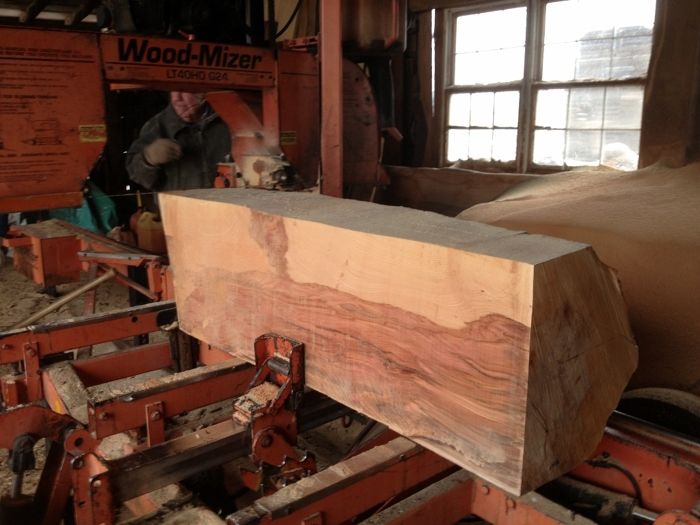
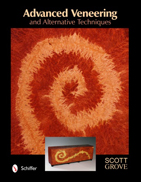
Advanced Veneering and Alternative Techniques
elevate your woodworking to a new level with the use of veneer
(Click here for Part One: No and Yes)
When the University of Rochester (U of R) asked me to manage its historical trees and make pieces from them, I jumped at the chance. The project sounded promising with multiple commissions and endless amounts of free material. It sounded like fun, too.
The U of R campus is huge, with a number of old growth historic, and therefore inherently valuable, trees on the property; some of them are suspected to be planted by Patrick Barry, one of Rochester’s horticultural luminaries of the mid 1800’s. Occasionally, some of these trees have to come down due to disease and/or new university construction.
The trees that we harvested varied in species and age, and included beech, sugar maple, black walnut, coffee bean, and white and red oak. All were large old growth trees, ranging from 24-inches to 36-inches in diameter, the largest a six-foot diameter beech.
On a circa-1920s red oak, our worst-case scenario occurred when the mill hit a number of nails deep inside the tree and we burned through three milling blades. I wanted to quarter saw the log to yield tight, straight and figured grain. This massive center chunk of a log, included the pith, which is an area typically avoided by woodworkers due to the checking that occurs in it, and we were unable to cut around it. I had to stop and rethink the end product.
The heritage value kept the ball rolling, so instead I decided to embrace the idea and use the entire chuck including the pith in a piece.
U of R is a major educational and medical institution, Rochester’s largest employer in fact, and my new table concept was based on a building block theme. Each block represented the different parts that make up this place of higher learning. Essentially, it signifies the idea that the sum of the parts is greater than the whole. I used the iron stains from the buried nails as part of the final finish, which adds to the story and its inherent value.
I also created a number of pieces from wide slabs, crotches, fused branches and a huge burl, all of which offered additional challenges.
I am three years into this heritage wood project and have created ten pieces to date, and the historic value of these pieces far exceeds the additional cost and extra effort.
So when you’re ready to make the cut, remember to plan ahead, prepare for contingencies, and you and your family will enjoy a sentimental piece of furniture for years to come.

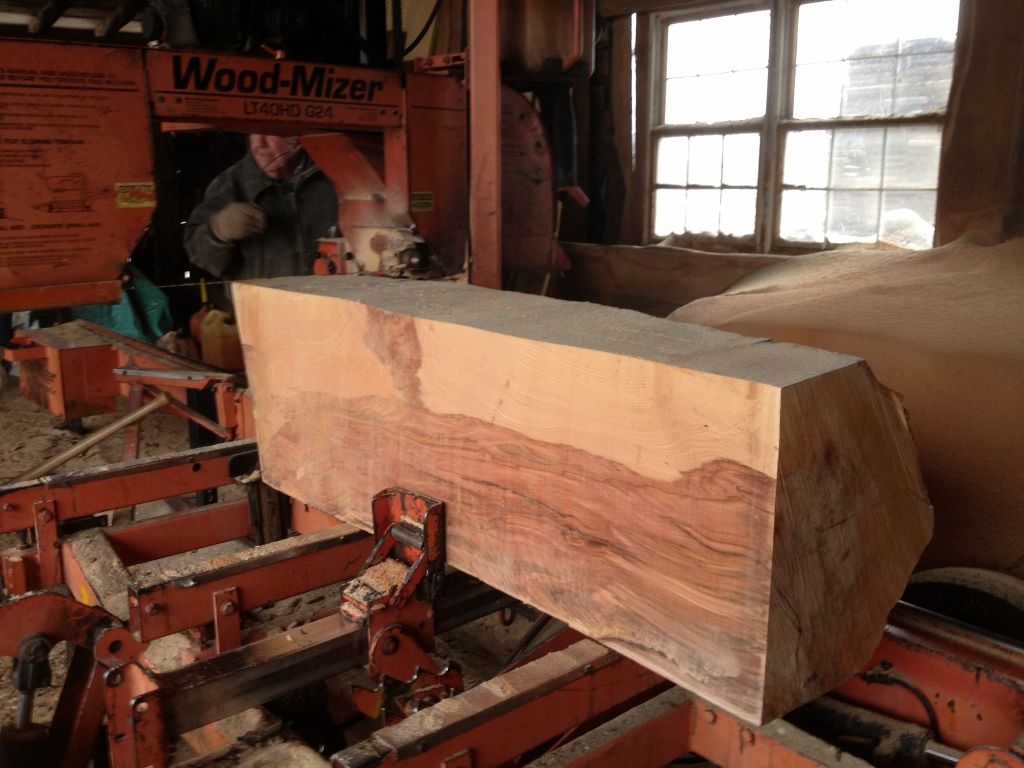
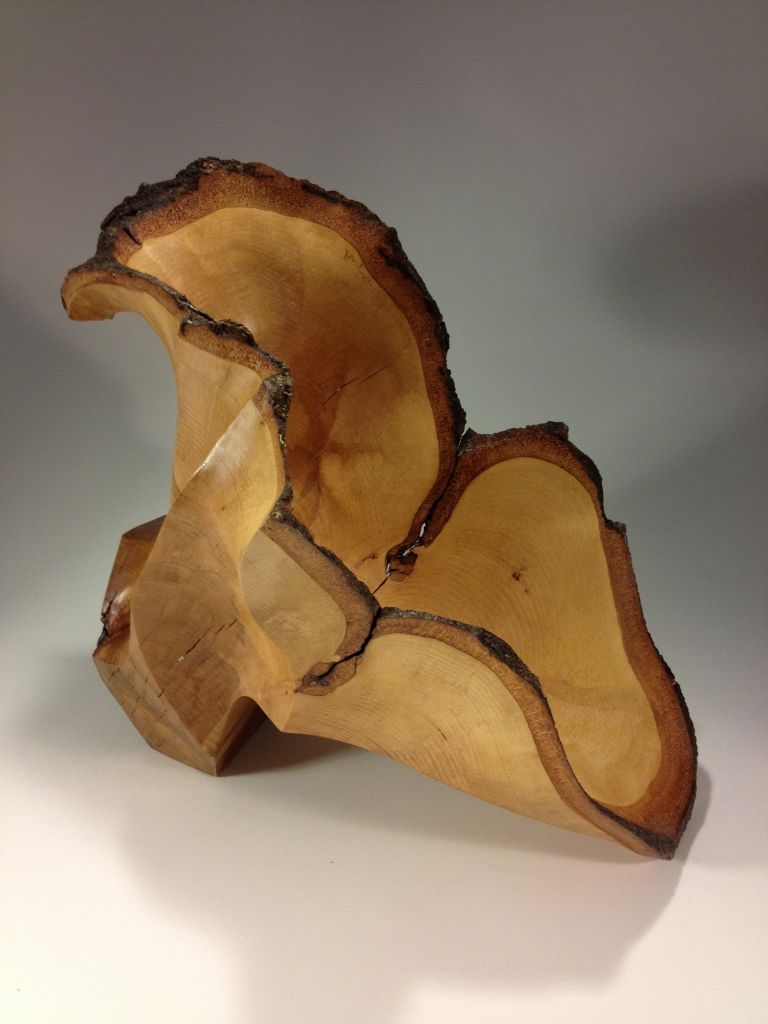
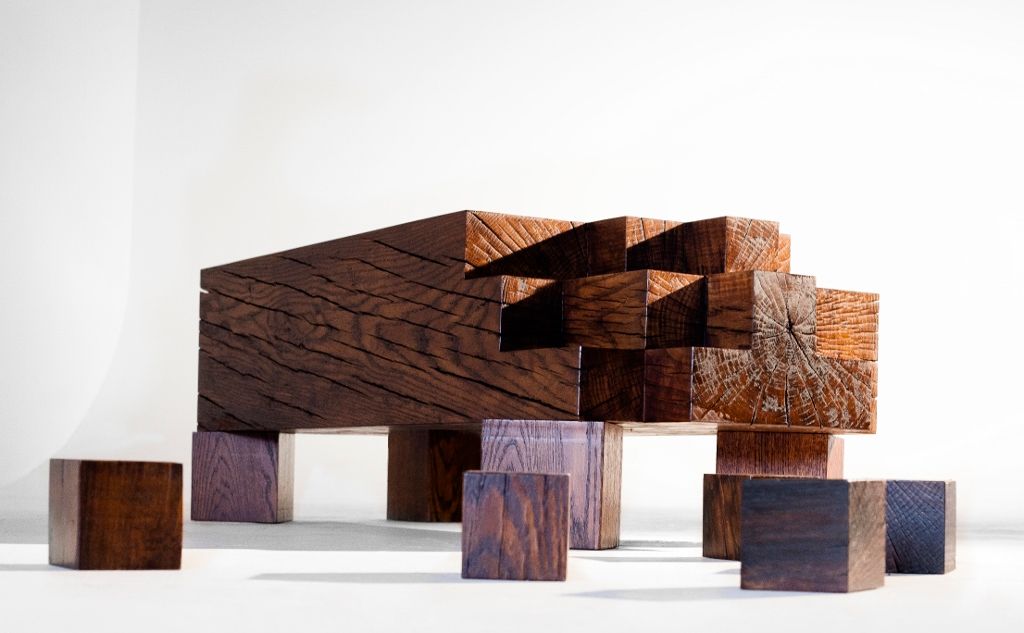
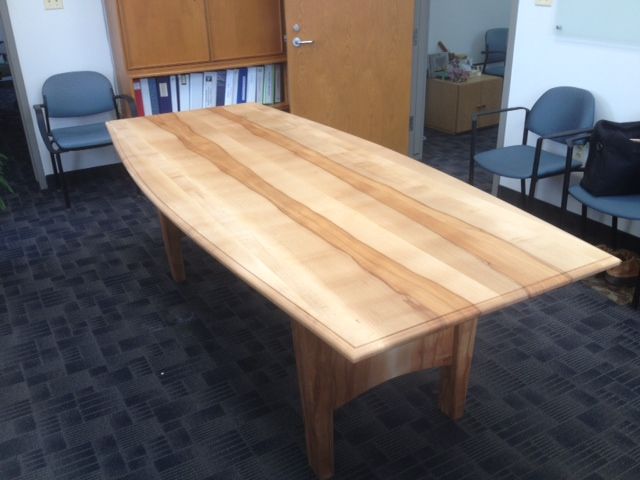


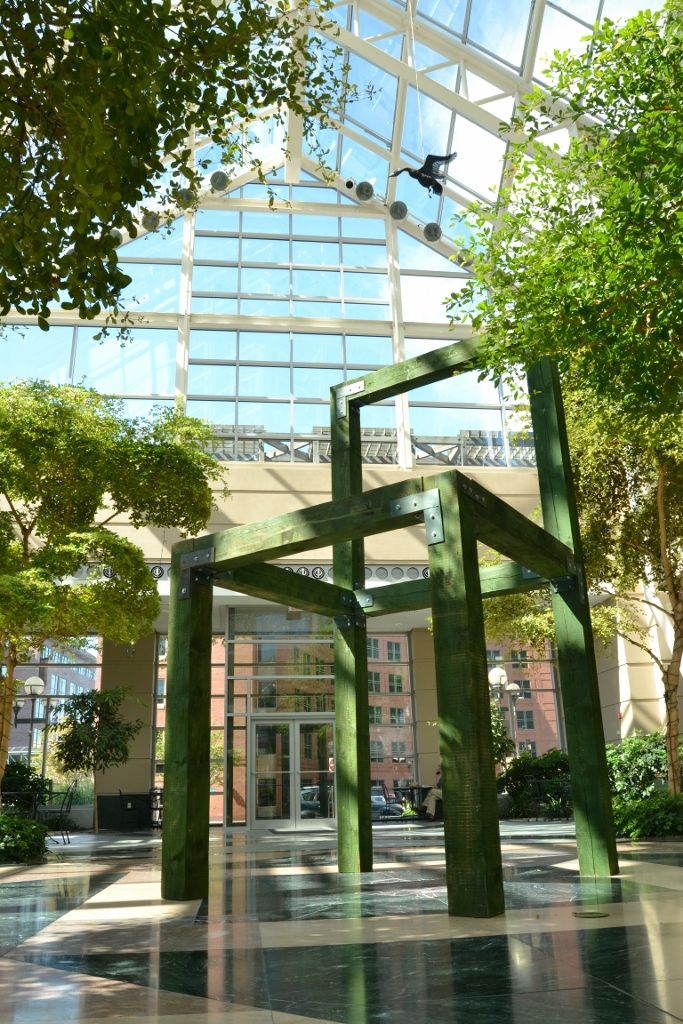
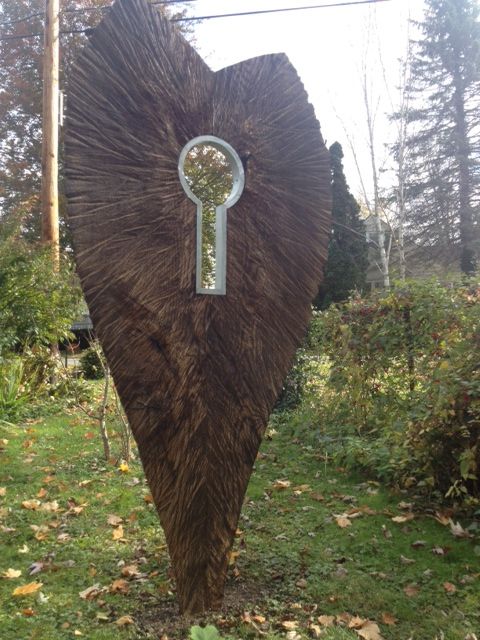
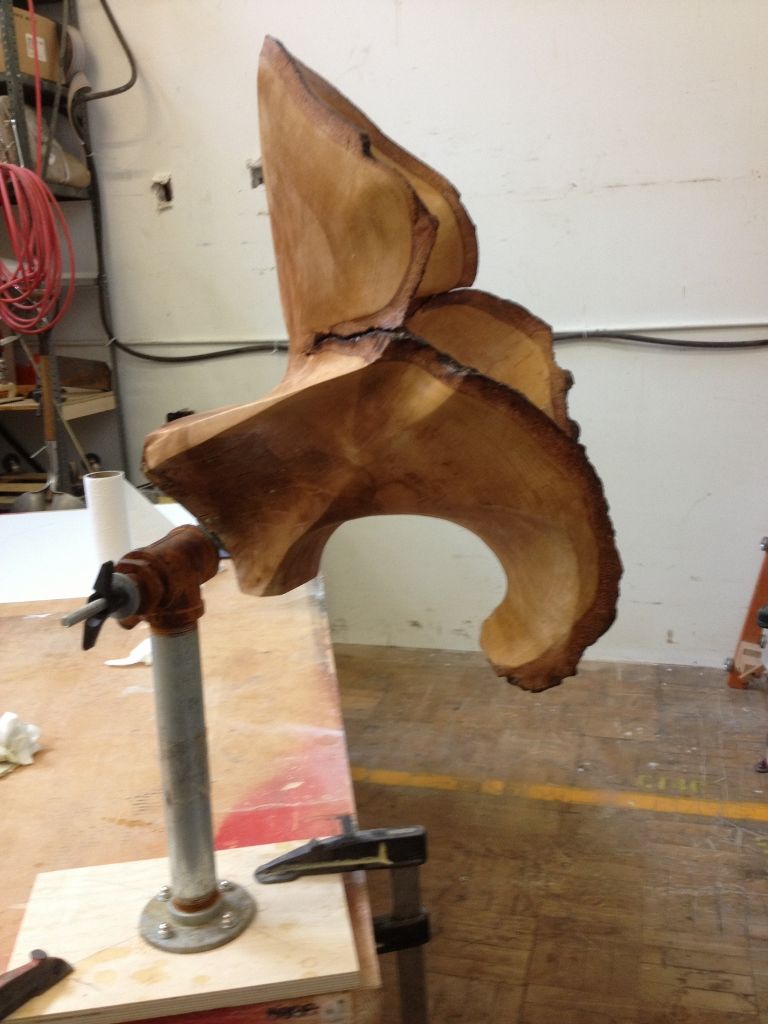

















Comments
I know that art is in the Eye of the Beholder and I have seen many studio pieces that are especially great. Perhaps I am missing something but the pieces pictured really don't do this great raw material justice. Less rare material could have been used and this historic lumber could have been used for some really great furniture designs. I'm sure some will take issue with me but I think this was a miss use of a rare find.Maybe I'm just not in tune with modern art.
Cheers,
Dean
I don't think you'll be alone in that thinking Grenada. Some of the pieces shown seem to push the boundaries of modern work in a direction I don't quite get. Maybe that was the direction the University wanted to go with the work though.
Perhaps you missed the point of the article GrenadaBarefoot? After reading both parts what I come away with is this: Be prepared for change. When milling the red oak log for his "table" Mr. Grove ruined 3 milling blades because of indwelling and hidden nails. Milling blades, to my understanding, cost thousands of dollars. So Mr. Grove by his own admission " ... had to stop and rethink the end product." Because he is an artist first, instead of scrapping the idea and saying it couldn't be done (he already had the commission) and doing something easy, he looked at this "error" as opportunity and created something that supported the theme even better. You may not like the aesthetic but one would have a hard time arguing the brilliance in the decision making process. I learned not too long ago that in any endeavor "The genius is in the errors."
One's job as a FineWoodworker is to see and develop that genius!
one other point, the commission that Mr Grove obtained is for large public art installations. To use a "heritage" log to make usable furniture would be in direct opposition to that commission as significantly fewer individuals could see and enjoy it. Public art commissions are much, much different than making a fine settee for one's mother-in-law. Just earning the commission requires adherence to rules and guidelines that require large scale thinking and no boundaries imagination. I, for one, salute Scott Grove, he has the heart of a Lion for tackling such a huge commission.
I hope that an extended article will be written about the subject of self-milled stock and potential use. My wife will be enjoying (I hope) kitchen counters made from a pine that her mother planted and that she jumped over as a child - which I cut and milled into boards last summer and am air-drying for fabrication this year.
We had to take down several white pine and eastern hemlock that were too large and too close to our off-the-grid home - but which will be reborn as structural and finishing materials for outbuildings on the property - and there is a great deal to learn about handling big logs without benefit of powered machinery. So too is there much to learn about preserving/exploiting the natural forms, textures and colors of the 'left-overs' - and I applaud the use of slab wood to make the tables pictured in the article (that's an idea worth building on!). Could you explain how ethylene glycol was used? I'm very interested in using live edges and bark on some of my future pieces.
To Bigknifeguy, thank you for your post and for clarifying what I thought to be clear as to the choices the author made and why. Being someone who mills his own lumber much of the time, let me dispell any blade mysteries. On a bandsaw mill, blades cost between $20-$40 dollars. Some high end blades that are carbide can cost substantially more but most mill folk do not use them as they are often coming into contact with foreign objects. For someone to go through three high cost blades on a single tree would need to look at the definition of insanity closely. The reason someone might load on another blade is if they think that the first blade went through the offending object and they could salvage a board. The second or third blade would confirm multiple objects and deem the offending tree unmillable. That is where the author's creativity and artistic juices kicked in to save the wood from the burn pile and became something useful and artistic. Cheers!
Of course beauty lies in the eye of the beholder. BigKnife is on target w/ his commentary: Mr. Grove made wise choices about the nature and history of the trees in arena of permanent public exhibitions.
For example, the permanent and apparently outdoor installations pretty much REQUIRE very robust, heavy designs for permanence. Can anyone imagine what would happen to publicly accessible fine furniture -- pen-knife carved "Kilroy Was Here's," "Johnny X Lucy 4ever's," black Sharpie witticisms, etc... would turn that fine furniture into well worn places to sit and study.
This begs the question of, "Who is supposed gain the most enjoyment from this project, the furniture maker or the end user?" Me thinks the more elaborate the pieces, the more of an egotistical experience the furniture maker enjoys.
One interpretation I take away is that the smaller and more rendered the chunks of the tree(s) become, the more distant they move from the original tree's identity. Clearly, the original trees were massive, and anyone who saw them on campus would certainly recognize them for that attribute, so creating massive furniture from massive trees more clearly and more directly acknowledges that original identity. Conversely, more "refined" and rendered traditional style furniture is made of many small sticks of wood that could be easily sourced from many different trees from anywhere on the planet, with only the furniture maker's word to go on. In simple terms, the wood for that kind of furniture is much more of a basic commodity.
Lastly, one of the things I just love about wood is touching it -- it feels so very different from nearly every other commodity in our lives, that through our fingertips we can sense that it was once alive, and we know in an instant what it came from. In fact, when we close our eyes, we can easily imagine a tree form, its leaves, its roots, the roughness of its bark, its shade, and when I was kid I remember wrapping my arms around those big trunks. The artist's work transports me back to those memories without needing to close my eyes because it possesses many of those same qualities.
I had a fairly large red oak tree fall on our house during the last great ice storm in Texas during 2013. I will have the tree milled and build something in the future from the tree that "died" during the "greatest ice storm of all time" ( you can embellish this story as much as you want), but the jest of the story is true.
Log in or create an account to post a comment.
Sign up Log in